↑ ↓ ↑ ↓
 |
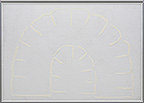 |
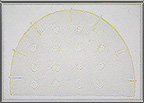 |
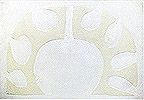 |
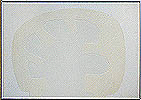 |
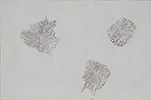 |
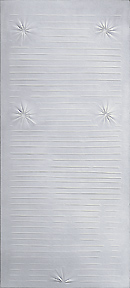 |
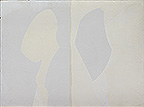 |
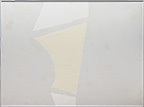 |
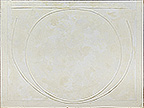 |
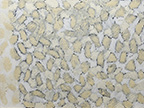 |
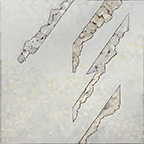 |
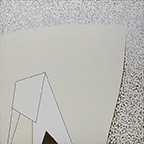 |
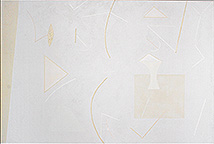 |
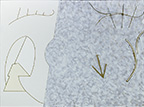 |
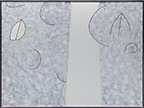 |
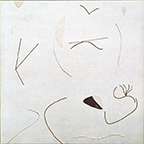 |
|
 |
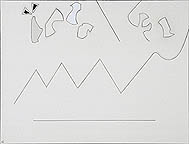 |
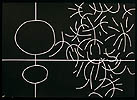 |
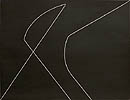 |
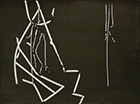 |
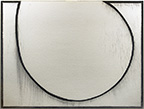 |
 |
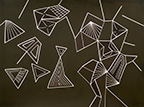 |
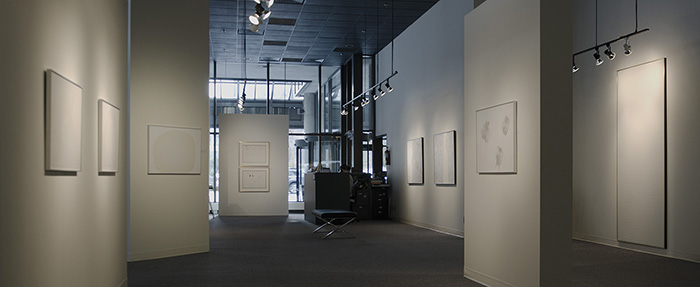 |
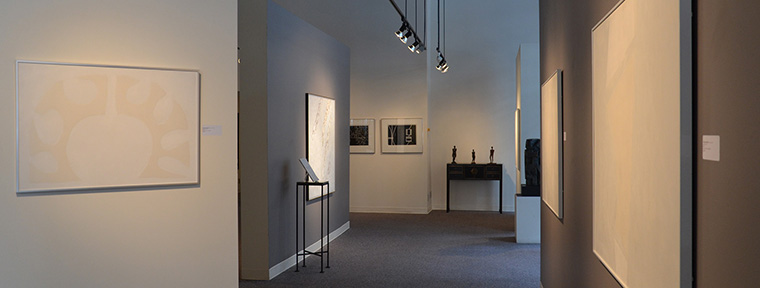 |
||
| home | shows | works | texts | misc |
| ← moore tribute ’11 | shows / commercial / wallace gallery ’16 | brampton sumis '19 → |
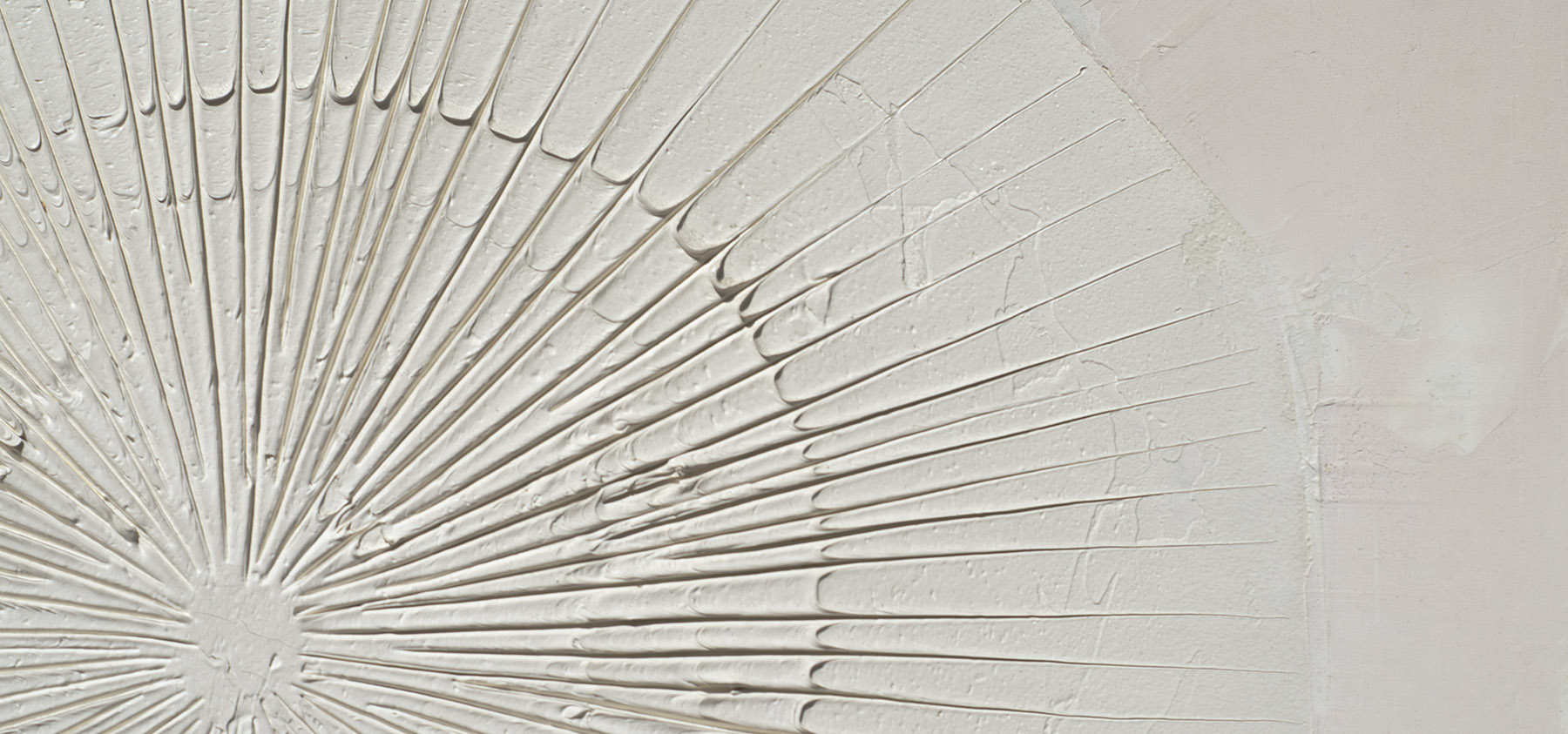
“From 1958 to 2007 Ron Bloore dedicated his life to painting. In his secondary career as a gallery director, educator and commentator he fought for the understanding of artists as integral to civilized communities. Inspired by primitive art and ancient Egypt, Bloore painted about human experience in a way that is profound yet immediately accessible to anyone and everyone.”
- from the exhibition catalogue
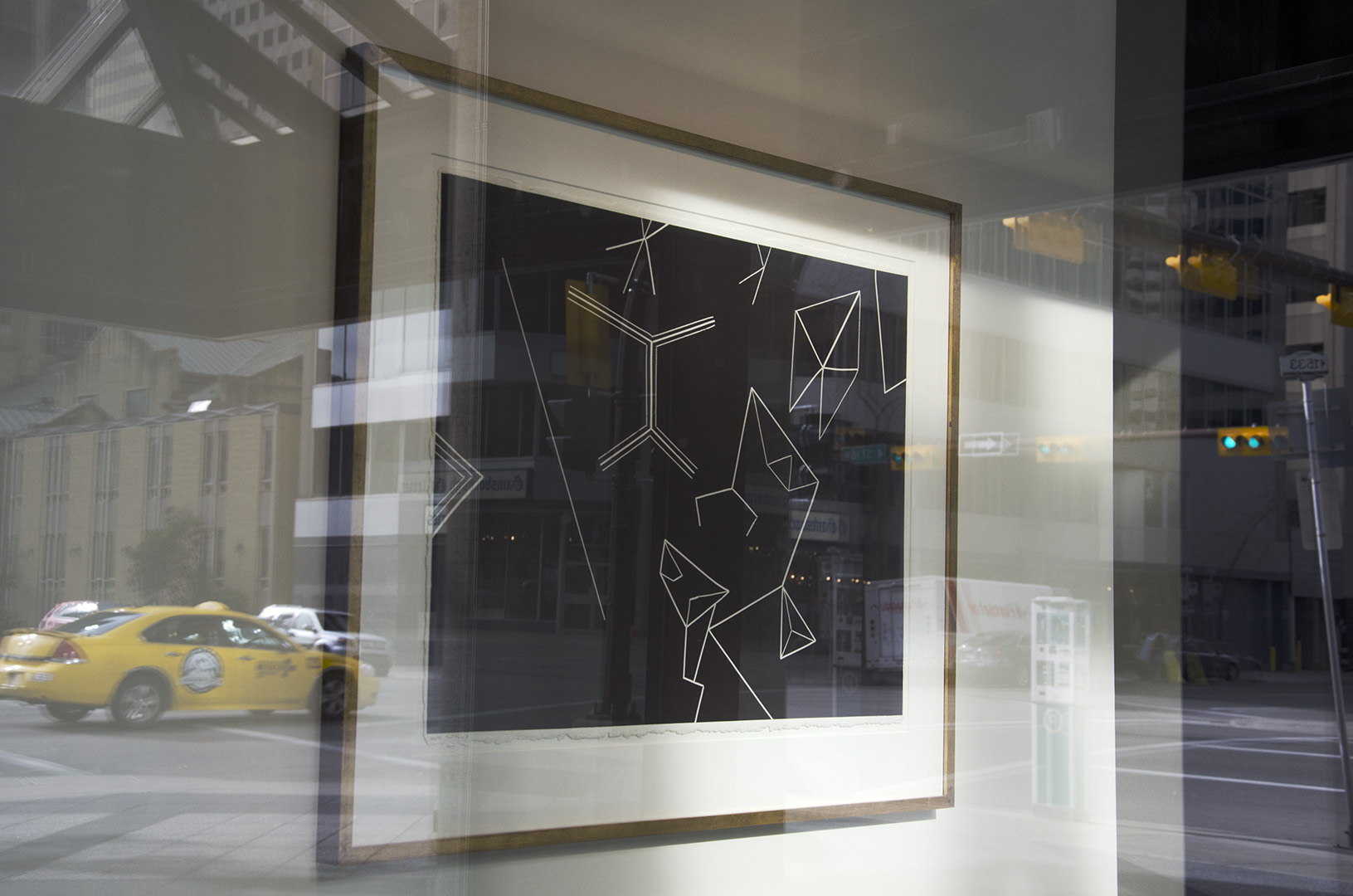
The Wallace Gallery is very downtown, very office tower, very Calgary. The ink work shown above (from 1994) was photographed from just outside the entrance.
 |
 |
 |
 |
 |
 |
 |
 |
 |
 |
 |
 |
 |
 |
 |
 |
 |
|
 |
 |
 |
 |
 |
 |
 |
 |
 |
 |
||
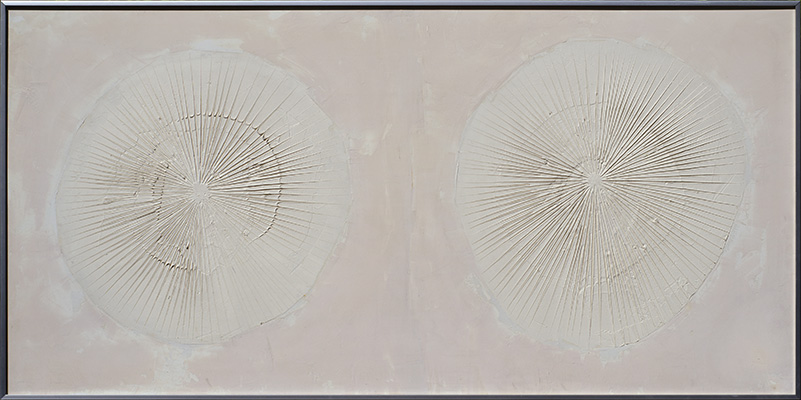
The quintessential Bloore image may be the star burst circle. Mandalas abound in art and indeed in much of Bloore’s art, but these radiating discs almost became a kind of trademark. A number of them pop up here and there in this exhibition. But the very first appearance of the supernova motif is the pair we see here which lead to three more paintings that same year:

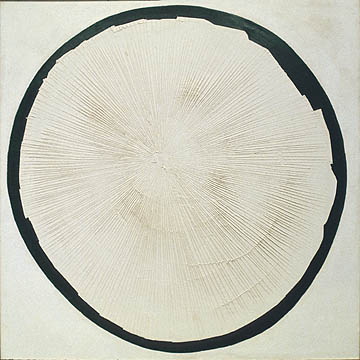
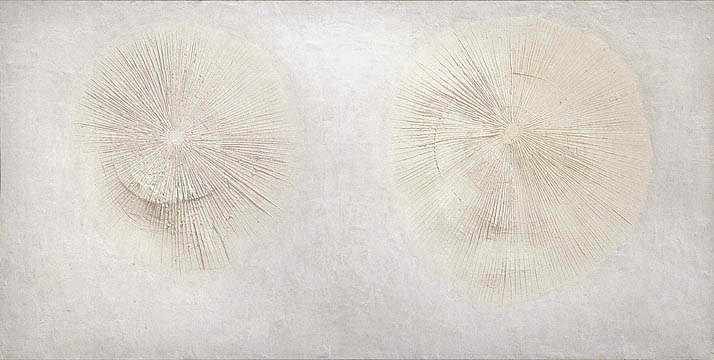
There is a 4 foot square single disc (above left) in the National Gallery dated “June 1960.” The very similar “White Sun Green Rim” (above middle) is listed in a number of exhibition catalogues, but always as just “1960.” The large 4-by-8-foot “Double Sun Painting” (above right) was in the “Five Painters from Regina” show in 1961 and the Not Without Design show of 1991. It is still in the estate collection and is dated “May 1960.” The 2-by-4-foot “study” here is dated “1960.” We should also note that Bloore said that in those days some full size 4-by-8-foot panels were bisected during execution when formal problems arose and were completed as squares, giving as an example the green painting at the McLaughlin Gallery.
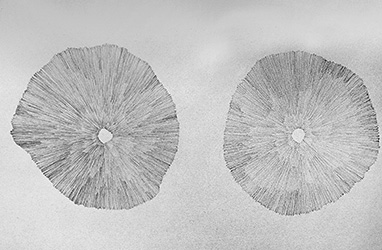
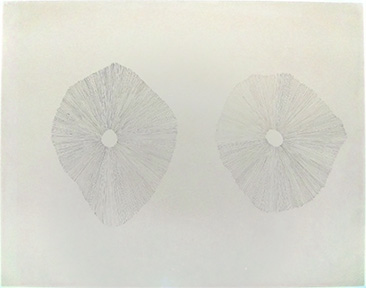
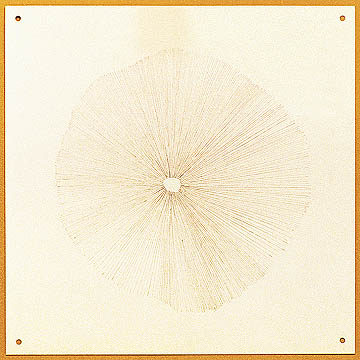
The double sun drawing at the Art Gallery of Greater Victoria (above left) which also hung in the National Gallery’s “Five Painters from Regina” show and the nearly identical drawing at the Mackenzie Art Gallery (centre) are both just dated “1960.” But the single sun drawing at the Art Gallery of Peterborough (right) is dated “Lac LaRonge / July 1960.” Bloore has said that this drawing started as another Double Sun but he messed up the second disc, so he cut the paper in half, punched a hole in each corner and called it correct. A third double disc drawing is known to exist in a private collection in Toronto.
So this was the first of these very important paintings which hung everywhere from Vancouver to San Paolo, Brazil, from London, Ontario to London, England. All four of them hung at some point in Dorothy Cameron's Galleries in Toronto. Three of the four were included in the nationally travelled retrospective Ronald Bloore, Sixteen Years 1958-1974 and this painting was reproduced in the catalogue of that show. It is listed as “Double Sun Study” and this was obviously accepted by the painter but that phrase does not appear on the back of the painting.
A studio copy of a 1974 exhibition catalogue has a note in Bloore’s hand next to this work, “Doubly for Dorothy.” It would have been one of the half-dozen or so paintings he gifted to Cameron which redounded to himself upon her death in 1999. From their marriage in the early seventies until Ron’s death in 2009, it hung over their bed and, in each of their three homes, the bedrooms were painted a matching soft pink colour.
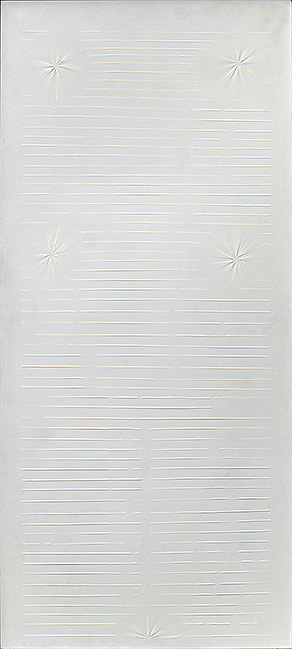
In the late 1960’s when the director of the National Gallery of Canada could not undertake nor cancel a tour he had arranged to visit the peoples of Canada’s north he asked Bloore to go in his stead. After the extensive and intensive tour Bloore produced official reports, scholarly essays, book contributions, magazine articles and reviews. Especially important was a long feature article in a large special issue of artscanada devoted to “The Eskimo World” (Dec.’71-Jan.’72), in which Bloore pleaded for a civilized respect for the culture.
The influence of the arctic itself and the art of the Inuit who lived there on Bloore is strong in these Dorset Floating Bear paintings. The reference inscribed on the backs, like the attributions on many other Bloores, record the source of the forms. These inspirations range widely through Bloore's work - from Ancient Egypt or Chinese bronzes to Byzantine Hungary or Renaissance Italy, Mesopotamia to Baffin Island.

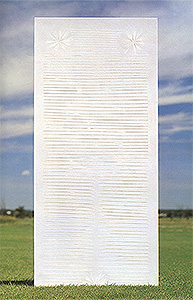
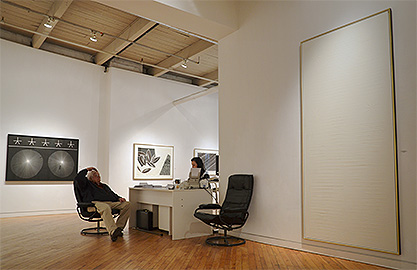
Above in the centre, is a photo by the legendary photographer Eberhart Otto. Otto accompanied Bloore on his second trip to Baffin Island which was for artscanada magazine. He was, according to the painter, the only man who could shoot his works properly. This is the Bear that hung in the widely travelled exhibition Ronald Bloore, Sixteen Years, 1958-74. The work was loaned to that show by the Art Gallery of Ontario. This photograph was reproduced in colour in the catalogue - the only colour image in it - and also in artscanada magazine. To take the shot they set the work up like a monolith in the field beside Stong House, Bloore’s studio on the York University campus. It presents the painting as a sculpture, highlighting the fact that these oil paint surfaces are carved with hand tools and sanded by machine.
All three known Dorset Floating Bears are reproduced here. The one in the middle, which starred in Ted Fraser’s Sixteen Years catalogue, has two and a half star shapes. The photo at the right shows this current Bear, which has four and a half star shapes, hanging in Bloore’s last show in Toronto at the Moore Gallery. Ron’s colleague and good friend, sculptor Don Bonham relaxes to the side, with Bloore inkworks on the walls behind him. The estate's last remaining Bear, now that this one has sold, is on the left.

“Go into the Blue Mosque and the Hagia Sophia in Istanbul where SPACE, rather than the object, is really the sacred thing. And you become identified with it. You're enveloped with the space and light.”
- Symposium on the Sacred in Art, CBC-TV (transcribed in artscanada, April/May 1971)
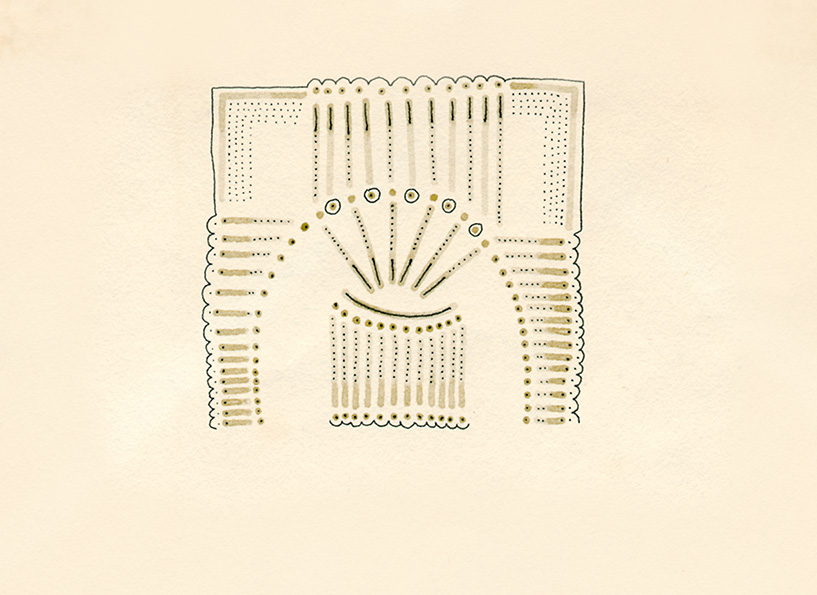
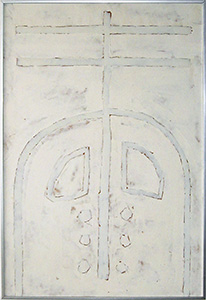
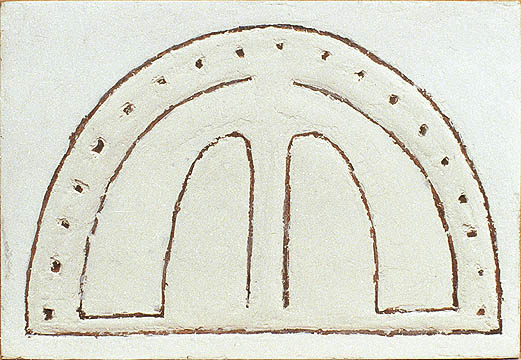
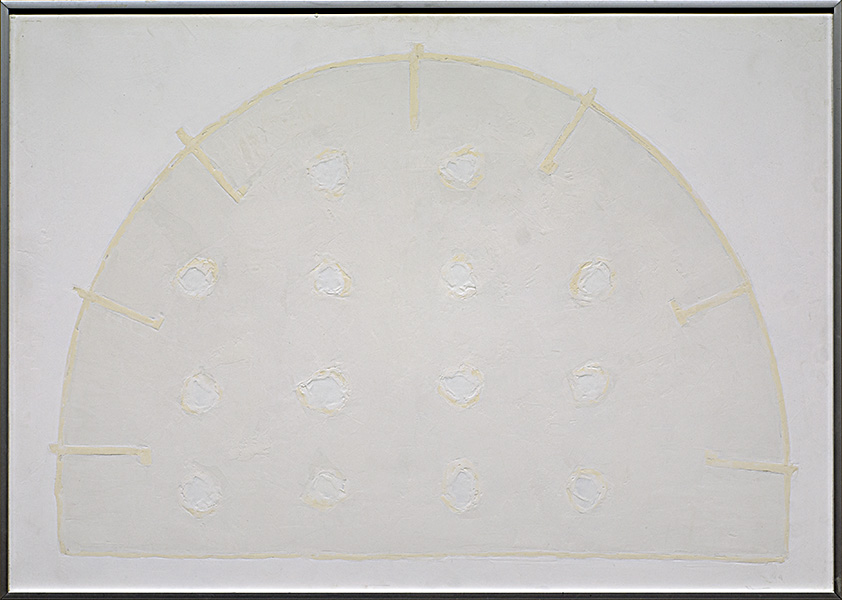
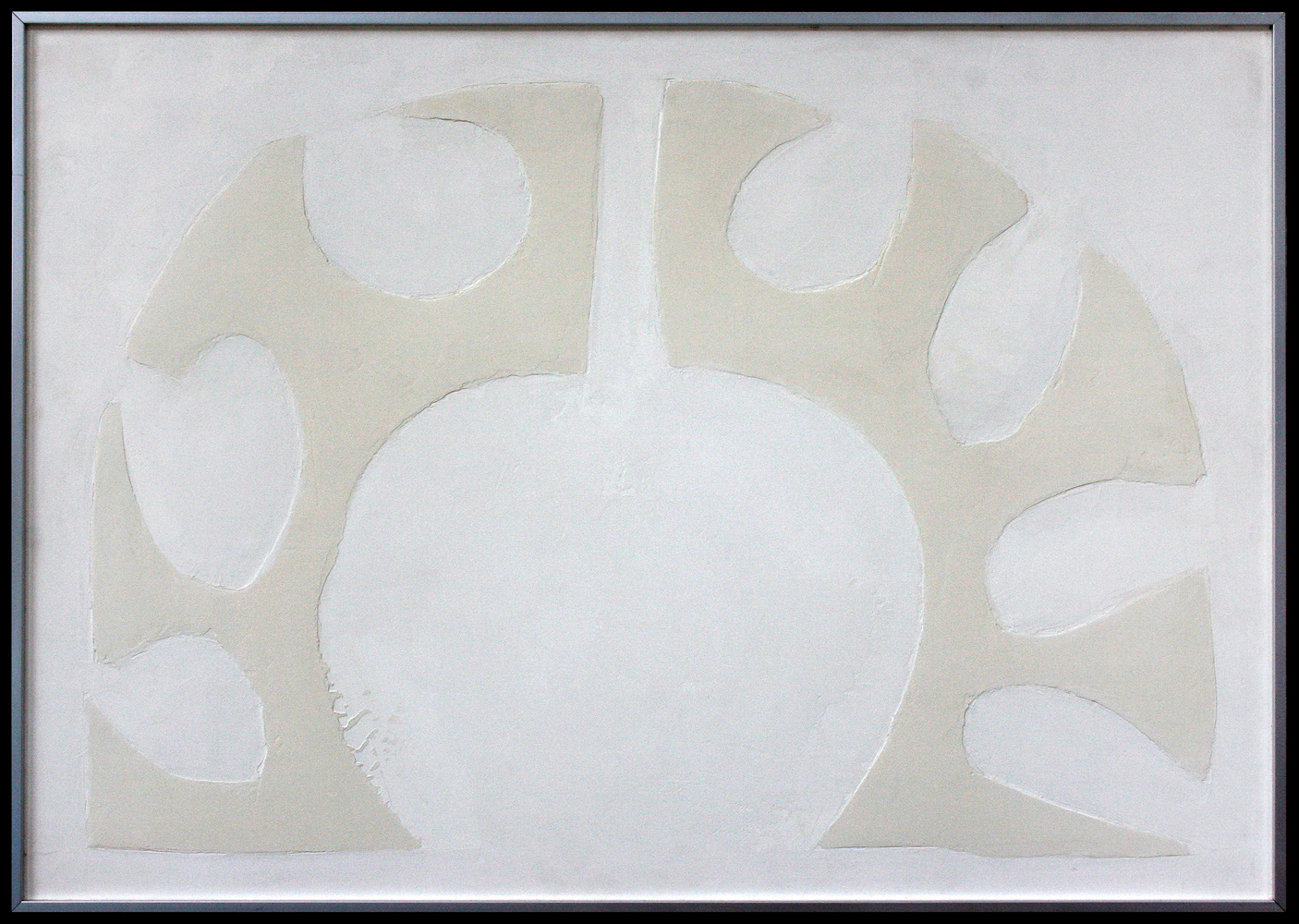

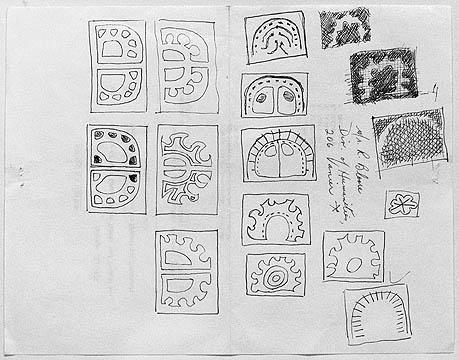
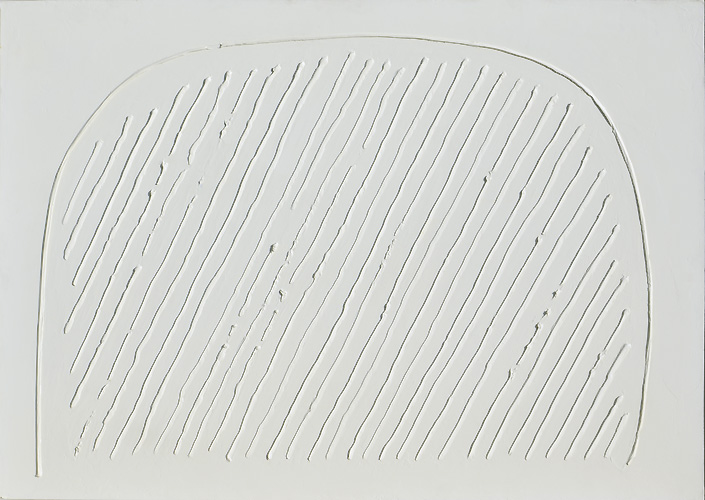
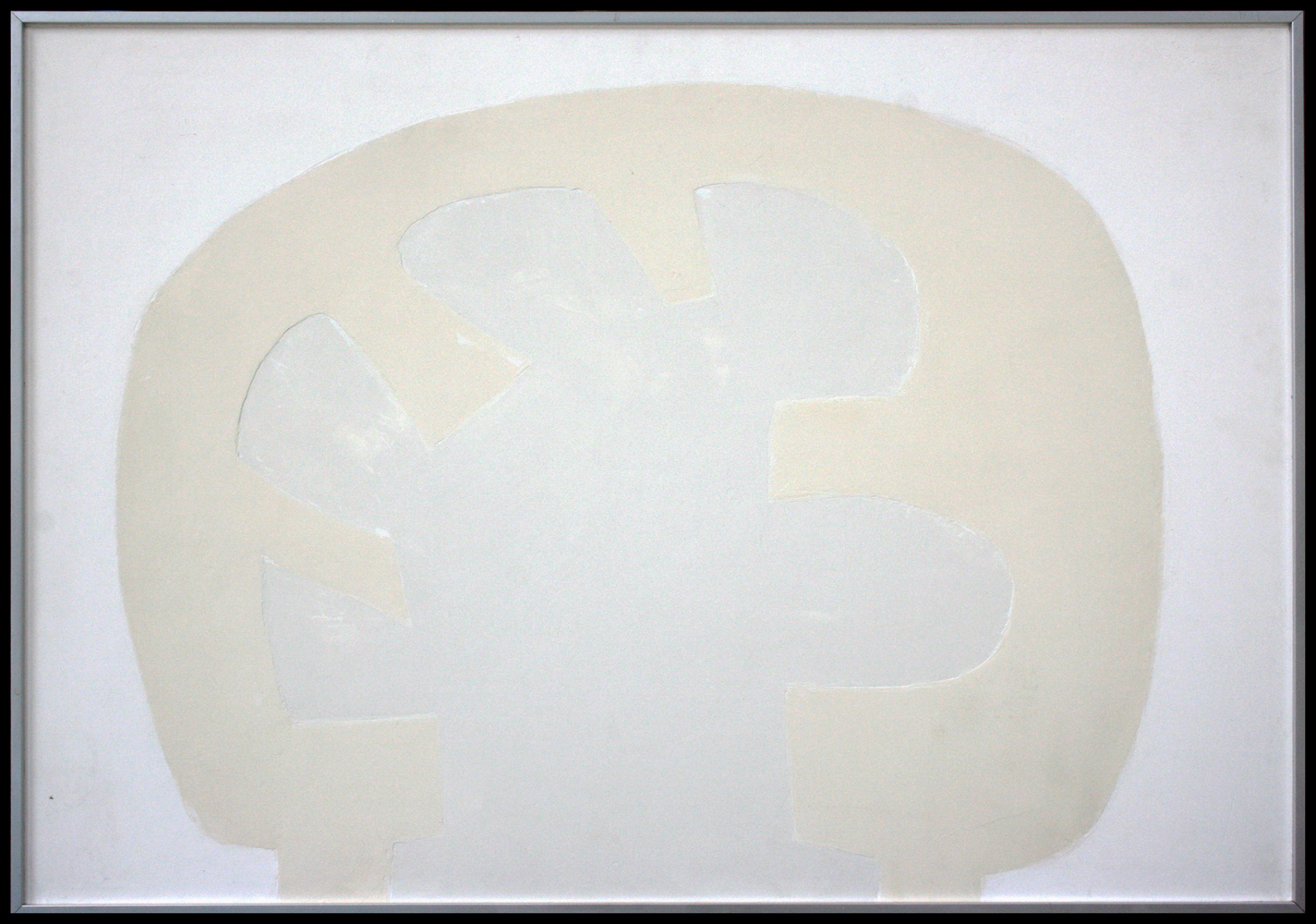

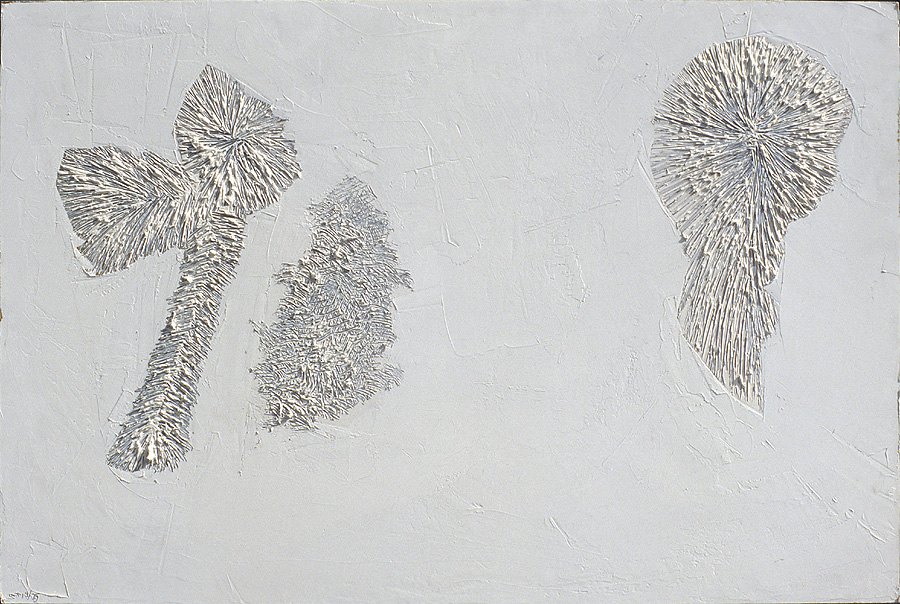
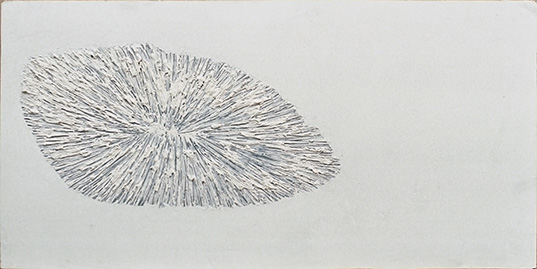
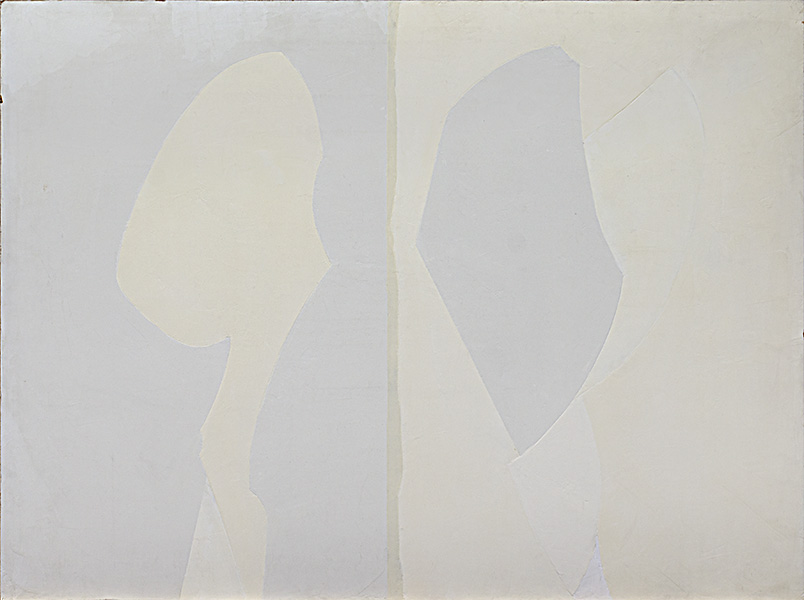


“I don't think the function of art is to be “art.” We make it that. And teach it in our art history courses. The function of art has been to communicate ethical, religious values. And it can be done with a landscape or it can be done with a portrait.”
- Symposium on the Sacred in Art, CBC-TV (printed in artscanada, April/May 1971)
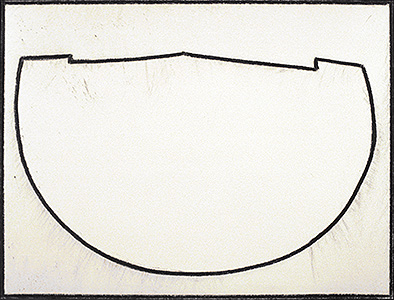
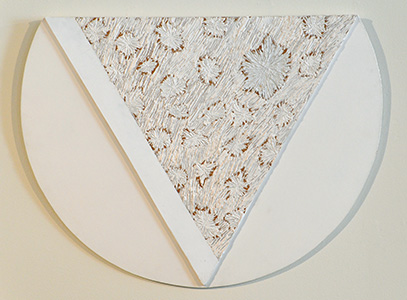
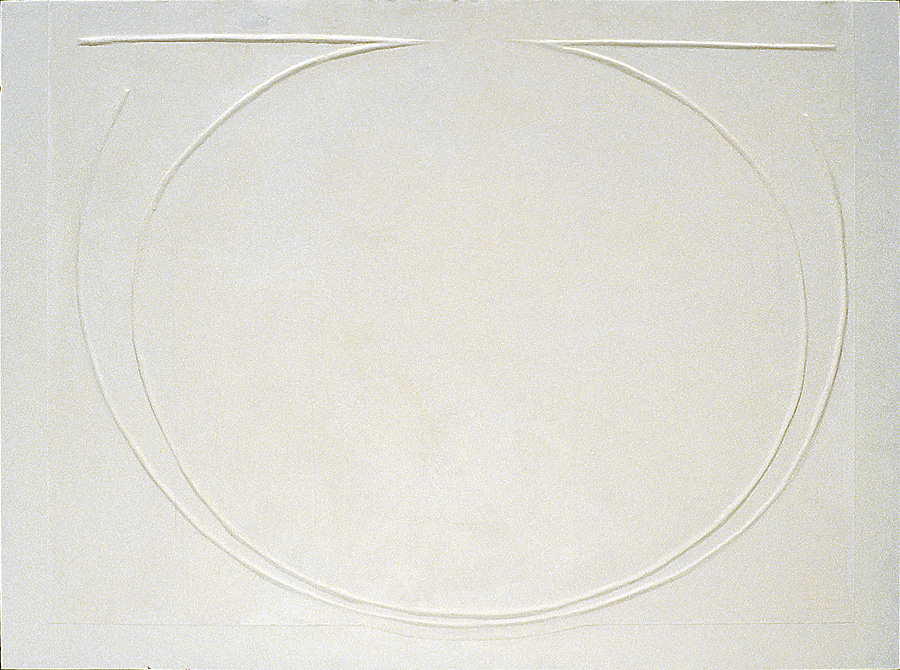
“On a visit to the Victoria and Albert Museum in 1982, Bloore was struck by a display of medieval chasubles, the hooded, sleeveless vestments worn over the alb and stole by Catholic priests officiating at mass. The shapes are simple and elegant; the textures of the fine silks and rich brocades, woven with exceptional skill and in great detail, fascinated him. What ensued was a series of paintings that was inspired by this experience.” (Sotheby's 2010)
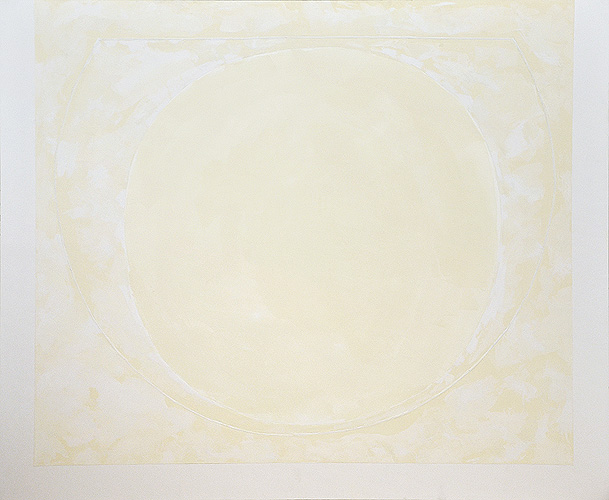
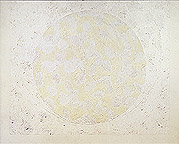
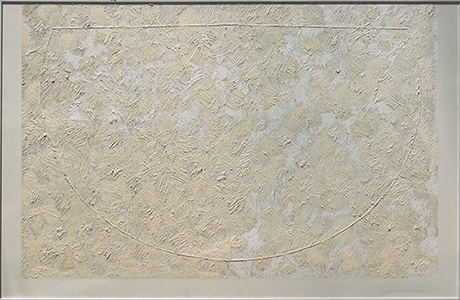
Bloore commented on the Chasuble series, “For years I had been concerned with establishing a low-relief image in oil paint on masonite, at times spray painting certain surfaces or glazing other areas. The paints are normally spread, raised and shaped by flexible paint scrapers. Japanese chopsticks are the latest addition to my working tools. The paint is thinly layered with the scraper and then stroked through rapidly at varying angles with the chopsticks. The direct result is a visual, very active surface. There is no one way of seeing these works. Changes in lighting conditions or the viewers' movements shift the surface patterns, and the painting is transformed.” (quoted by Sotheby's 2010)
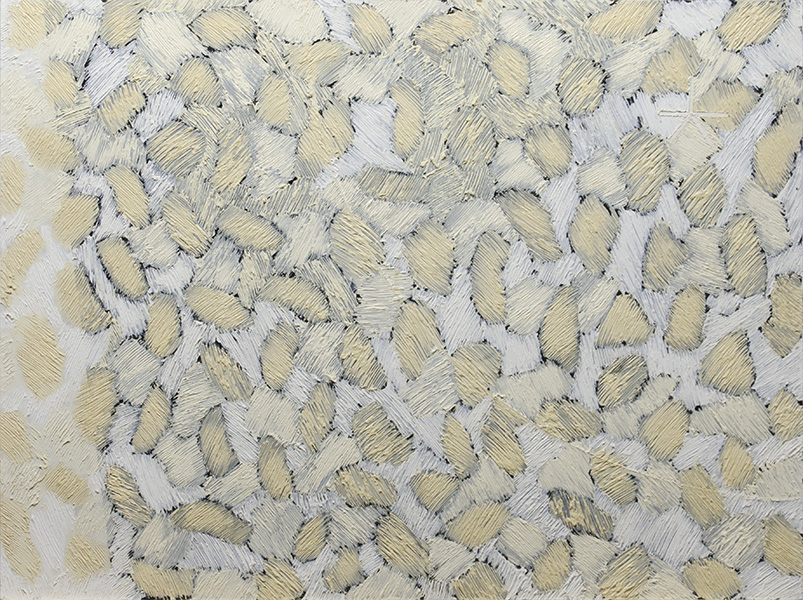
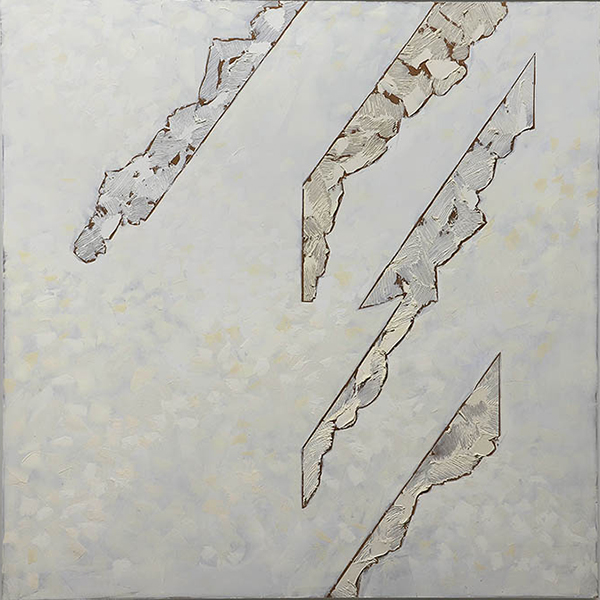
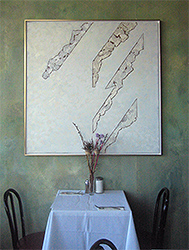
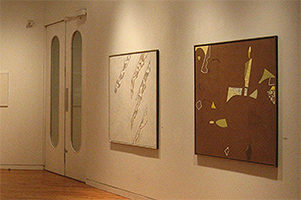
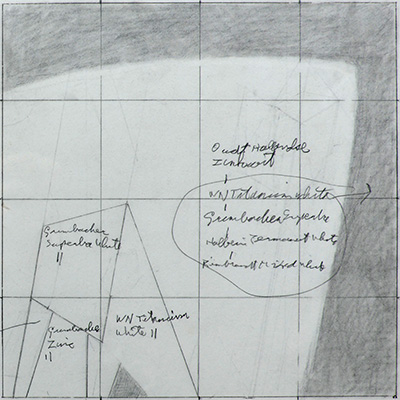
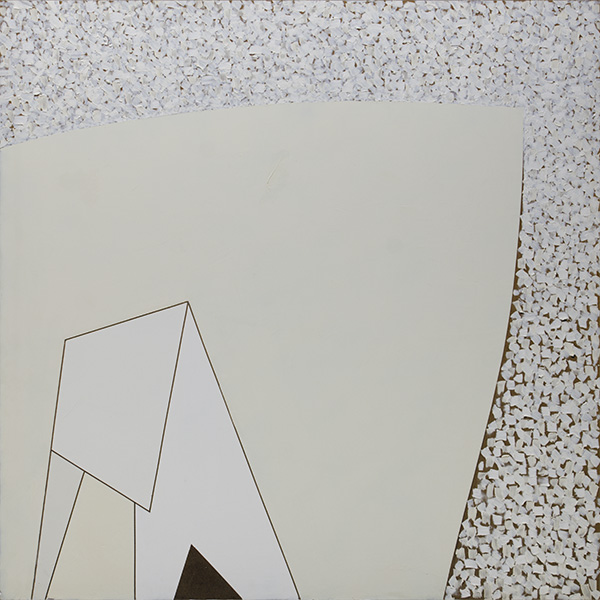
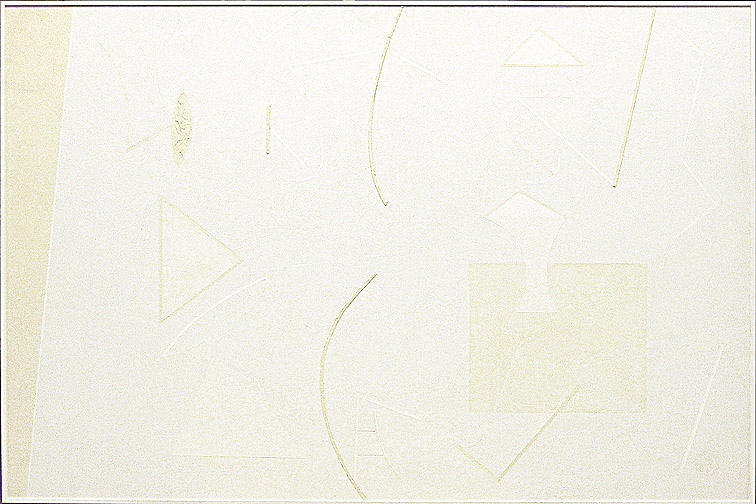
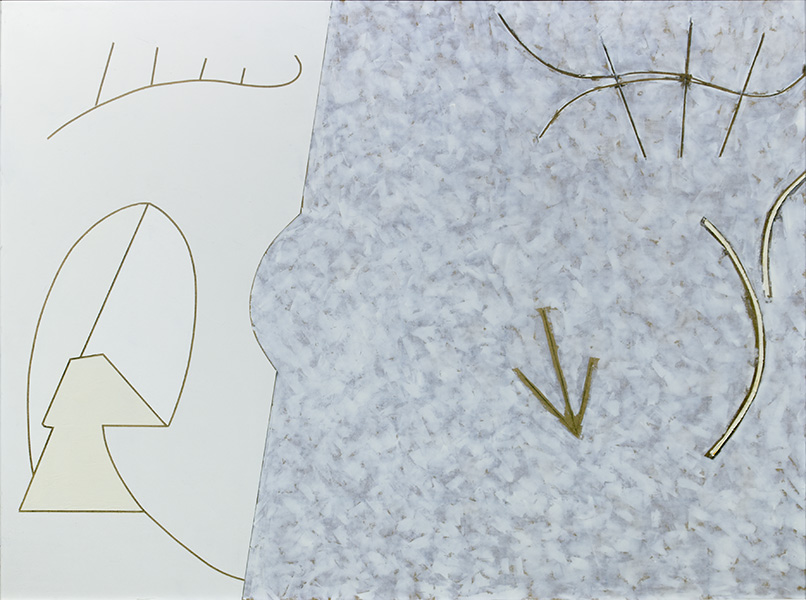
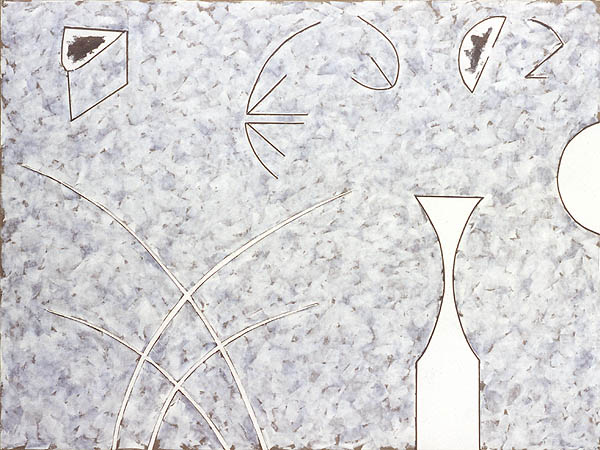
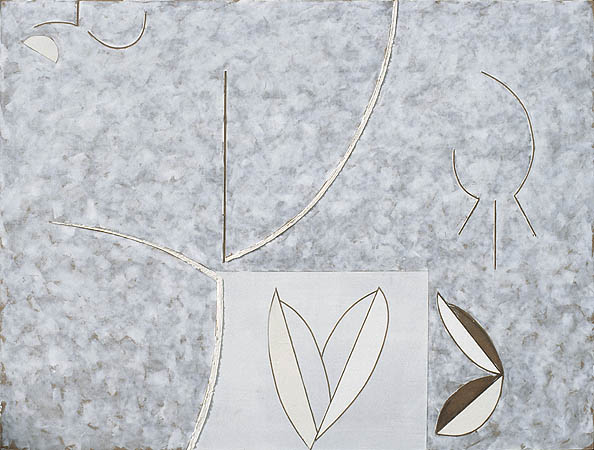
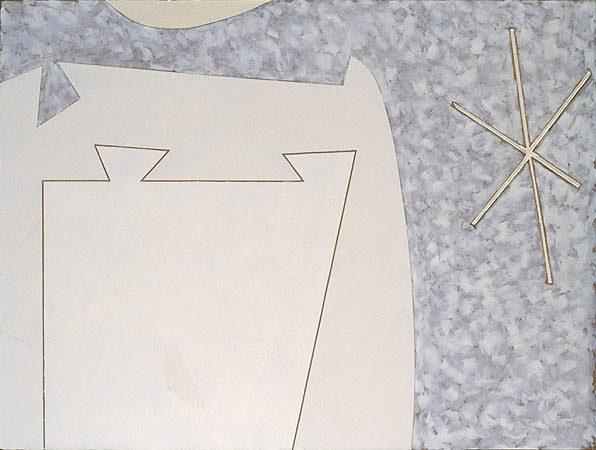

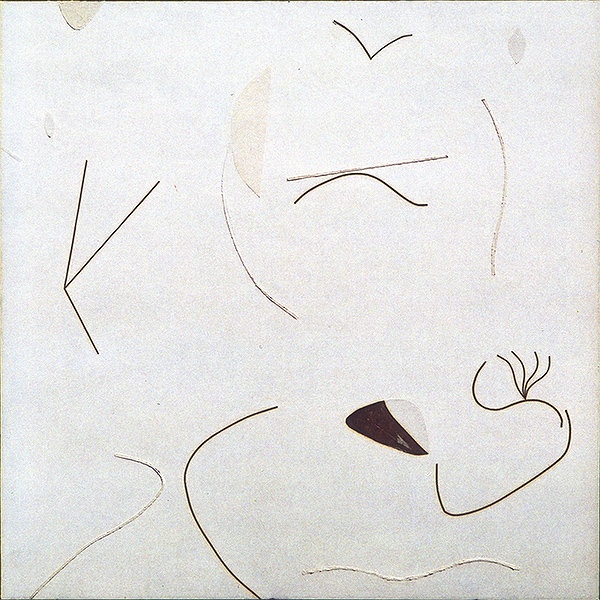
 |
 |
 |
 |
 |
 |
 |
 |
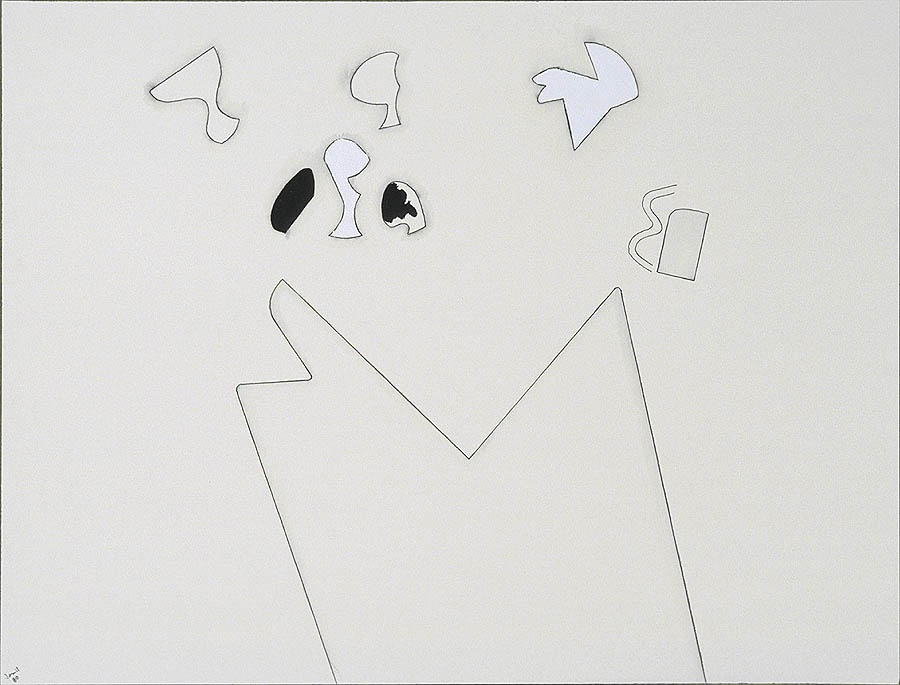
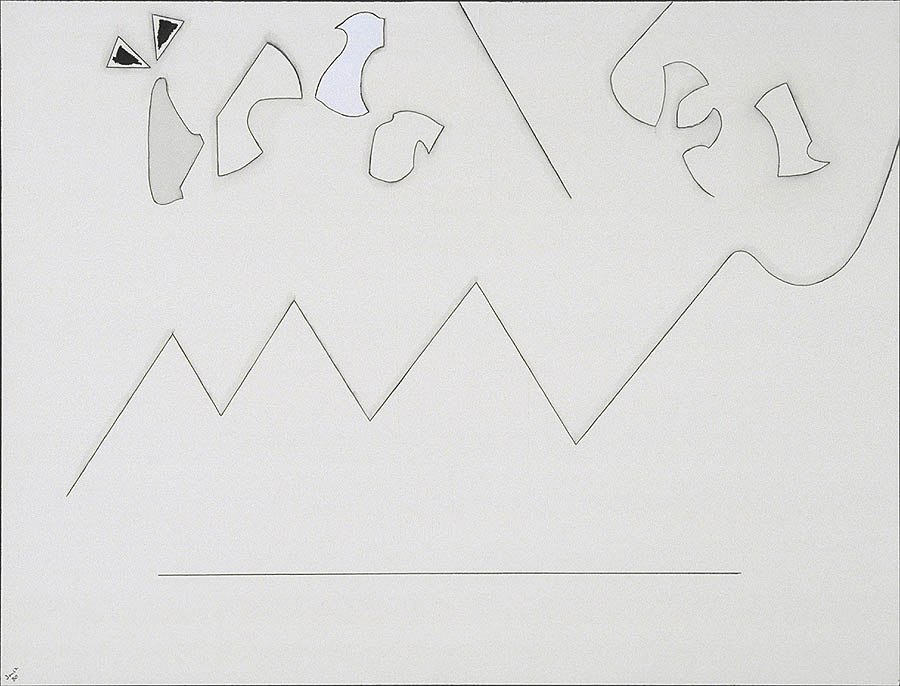
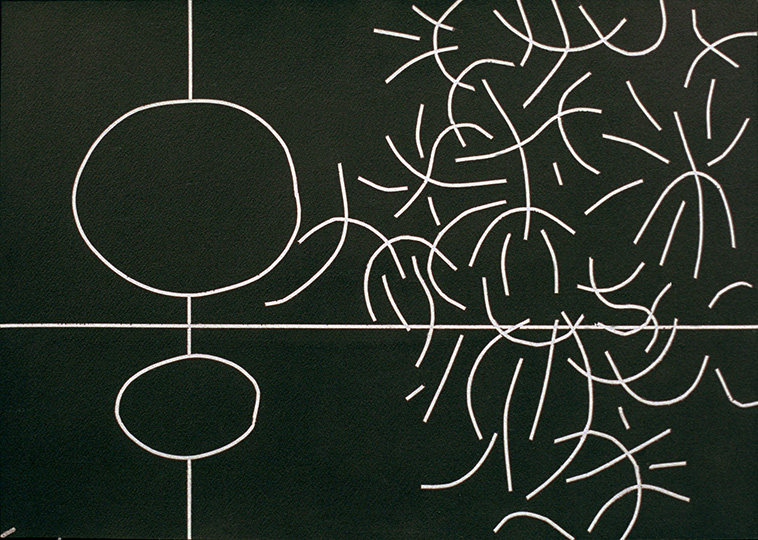
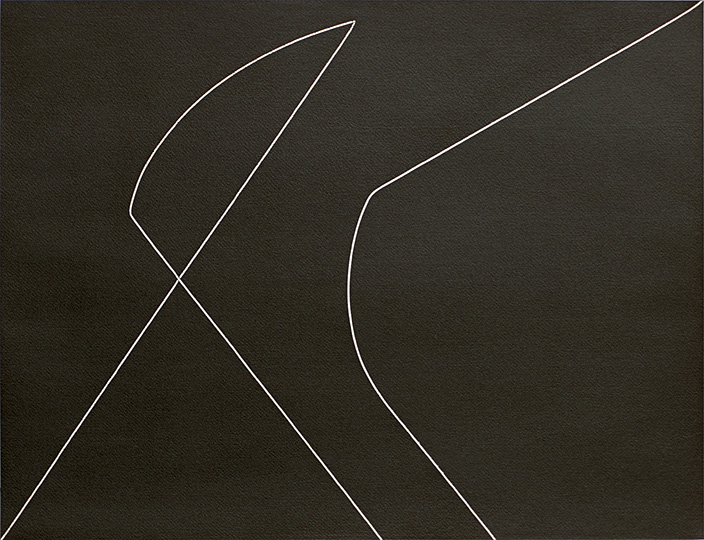

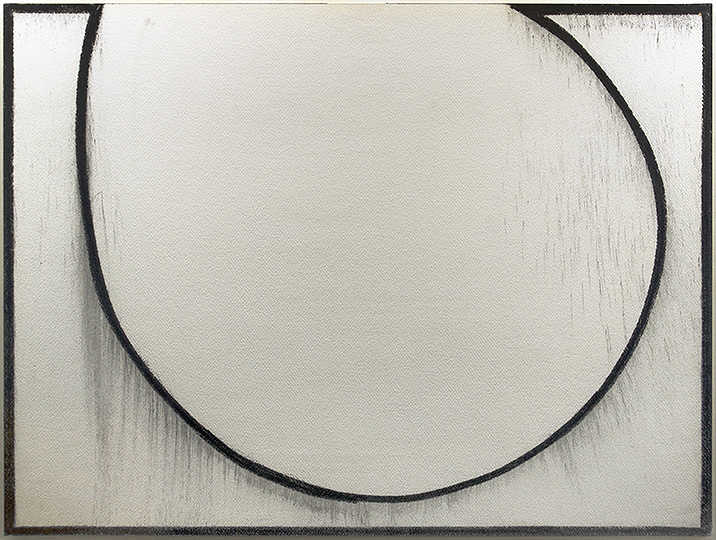
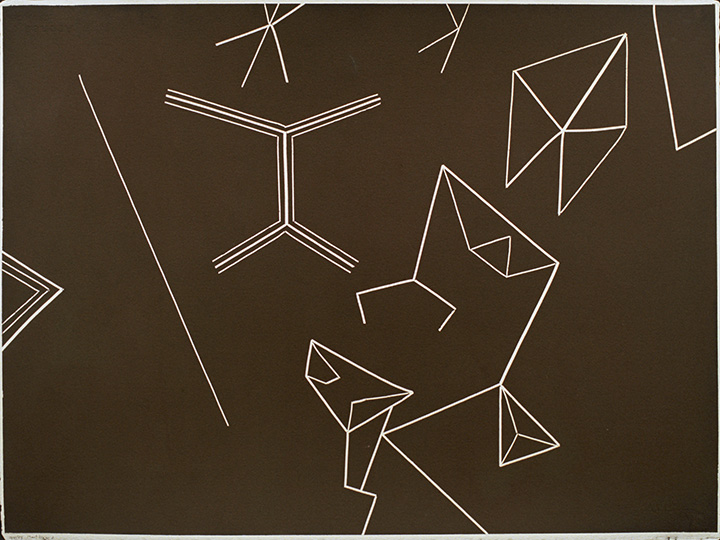
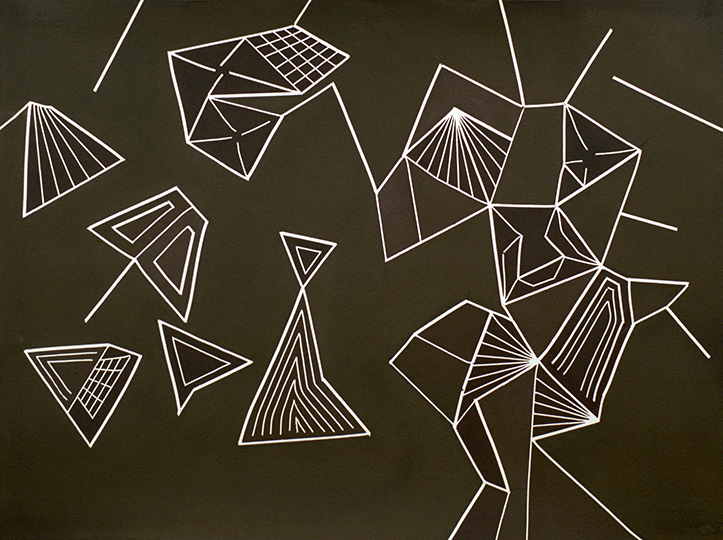


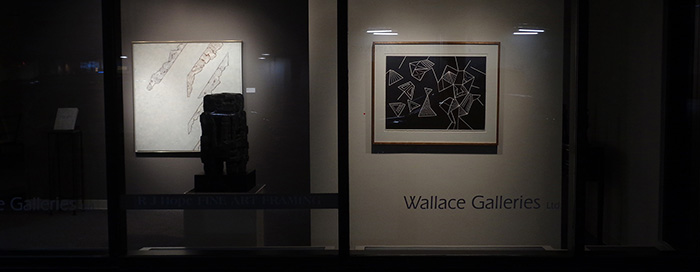
Yes the Wallace Gallery is very downtown, very office tower, very Calgary. Stepping inside, however, a beautiful hush proponderates. The walls are all painted either a soft cream or a warm gray and both colours are very amenable to paintings. The ceiling is mysteriously dark and vanishingly, almost religiously high. The floor to ceiling windows bring in light and the feeling of the city while the many partitions maintain the calm.



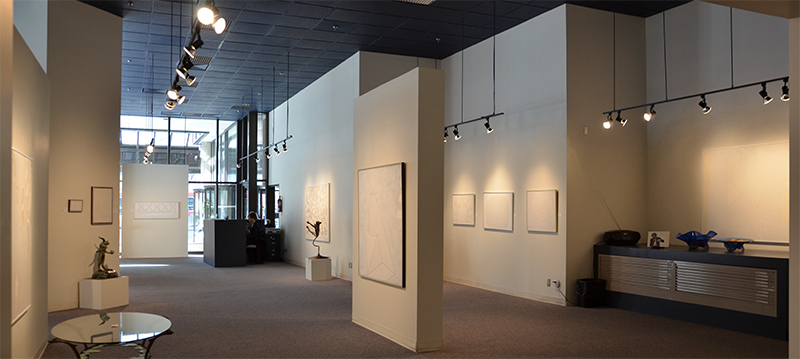 |
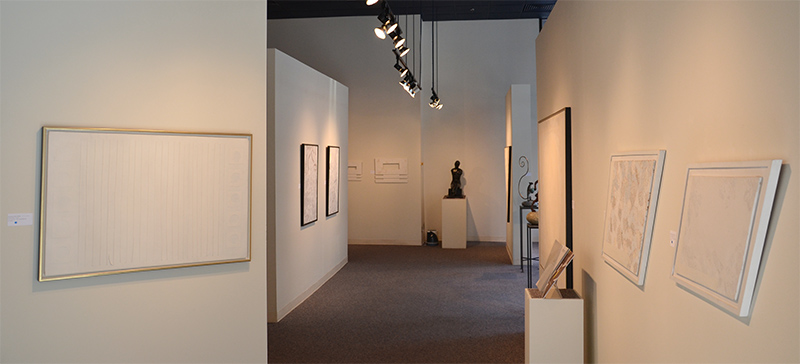 |
 |
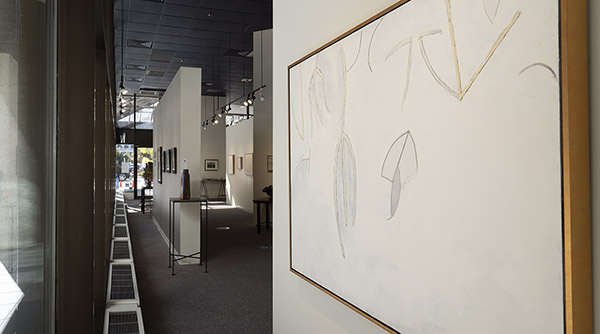 |
| ← moore tribute ’11 | shows / commercial / wallace gallery ’16 | brampton sumis '19 → |